
About UsThe Numismatic Bibliomania Society is a non-profit organization promoting numismatic literature. For more information please see our web site at coinbooks.org SubscriptionsThose wishing to become new E-Sylum subscribers (or wishing to Unsubscribe) can go to the following web page link MembershipThere is a membership application available on the web site Membership Application To join, print the application and return it with your check to the address printed on the application. Membership is only $15 to addresses in the U.S., $20 for First Class mail, and $25 elsewhere. For those without web access, write to: David M. Sundman, Secretary/TreasurerNumismatic Bibliomania
Society AsylumFor Asylum mailing address changes and other membership questions, contact David at this email address: dsundman@LittletonCoin.com SubmissionsTo submit items for publication in The E-Sylum, just Reply to this message, or write to the Editor at this address: whomren@coinlibrary.com
BUY THE BOOK BEFORE THE COINYou won't regret it! |
- WAYNE'S WORDS: THE E-SYLUM APRIL 18, 2010
- NUMISMATIC LITERATURE DEALERS KOLBE AND FANNING JOIN FORCES
- LAKE BOOKS NUMISMATIC LITERATURE SALE #102 REMINDER
- THE WILLIAM A. BURD NUMISMATIC LIBRARY
- NEW BOOK: MEDALLIC PORTRAITS OF ADMIRAL VERNON
- UPDATE ON THE GUIDE BOOK TO THE GUIDE BOOK
- ANS LIBRARY CATALOG NAMING CONTEST RESULTS TO BE UNVEILED
- ANS OPENS NEW EXHIBIT ON COUNTERFEIT MONEY
- KARL MOULTON ON JOHN ECKSTEIN, ENGRAVER
- MORE ON DR. JAMES MEASE (MEAN)
- ON NUMISMATIC ENCYCLOPEDIAS
- NUMISMATIC VOCABULARY: DOUBLED DIE VS DOUBLE DIE
- MORE ON GHOSTLY COINS
- THE MESERVE COLLECTION OF LINCOLN IMAGES
- QUERY: RESEARCHING CONTEMPORARY NEWSPAPERS FOR NUMISMATIC INFORMATION
- AN OVERLOOKED RESOURCE: COIN CLUB MEETING REPORTS
- TRUTH AND FICTION OF THE 1574 LEYDEN SIEGE COINS
- FRANK DUPEE: A STUDY IN NUMISMATIC RESEARCH
- ANCIENT COIN COLLECTORS GUILD URGES ACTION
- QUERY: HAVEN O'MORE, WORLD'S GREATEST BOOK COLLECTOR
- QUERY: SOFTWARE FOR LARGE BIBLIOGRAPHIES
- ALAN V. WEINBERG ON THE HOBBY IN THE 1960S
- QUERY: THE LIBRARY AND COLLECTION OF OLE P. EKLUND
- HOARD OF HENRY I COINS UNEARTHED
- ON THE CHOICE OF ANA CONVENTION CITIES
- HINT FOR READING THE E-SYLUM ON MAC COMPUTERS
- MEDALLION DEPICTS VINCE LOMBARDI AS LAUREL-CROWNED HERO
- TAKE THE BBC NEWS NUMISMATIC QUIZ
- GEORGE WASHINGTON RACKS UP LIBRARY LATE FEES
- FEATURED WEB PAGE: GHANA BANKNOTES
WAYNE'S WORDS: THE E-SYLUM APRIL 18, 2010

Among our new subscribers this week is Nadia Haupt. Welcome aboard! We now have 1,332 subscribers.
John Salyer uploaded several of the images used in this week's issue to our Flickr archive. Thanks!
This week we open with news of a merger in the U.S. numismatic literature field.
Other topics this week include a new book on Admiral Vernon medals, the new ANS counterfeiting exhibit, more on ghostly coins, researching newspaper articles and club reports, and a neat new medallion of Vince Lombardi. To find out Quod nefas ibi accidit, read on. Have a great week, everyone!
Wayne Homren
Numismatic Bibliomania Society
NUMISMATIC LITERATURE DEALERS KOLBE AND FANNING JOIN FORCES
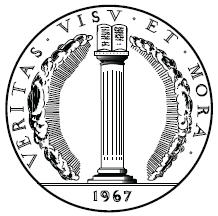 George Frederick Kolbe and David F. Fanning are pleased to announce that they have combined their numismatic literature firms to expand business opportunities and to better serve their joint clientele. The new entity will operate as Kolbe & Fanning Numismatic Booksellers and will have an office in Gahanna, Ohio, just outside Columbus. Both Kolbe and Fanning will be actively involved in the business.
George Frederick Kolbe and David F. Fanning are pleased to announce that they have combined their numismatic literature firms to expand business opportunities and to better serve their joint clientele. The new entity will operate as Kolbe & Fanning Numismatic Booksellers and will have an office in Gahanna, Ohio, just outside Columbus. Both Kolbe and Fanning will be actively involved in the business.
Established in 1967, George Frederick Kolbe Fine Numismatic Books is the largest and longest currently active rare numismatic literature auction firm in the world. George Kolbe has been selling important numismatic books at auction since 1976 and David F. Fanning entered the numismatic literature field in 2003. The two have conducted 115 auctions featuring well over 100,000 lots selling for many millions of dollars. Dozens of fixed price lists offering important numismatic works have also been issued over the years and that aspect of the firm's business will be enhanced by more frequent lists, both in print and online at the Kolbe & Fanning website.
In addition to conducting regular auctions, Kolbe & Fanning are always eager to purchase important numismatic books and libraries for cash; in complete confidentiality if so desired. Over the years, the firm has packed libraries and arranged for shipments on three continents and are willing to travel anywhere in the world to do so. Written appraisals are also available as well as advice concerning the value and salability of rare numismatic works. There is no charge for this latter service.
By joining forces, Kolbe and Fanning believe they will be able to ensure that the business will continue to operate for many years, as they assist collectors, dealers, and researchers in developing their libraries and discovering new avenues for numismatic study.
The firm's first auction will be the second part of the Stack Family Library, which will close on June 3, 2010. A printed catalogue may be obtained by sending $10.00 and the catalogue is available online at no cost.
Two auctions are planned for September 2010 (details to be announced soon) and a major public auction has been scheduled on January 8, 2011 in conjunction with the New York International Numismatic Convention at the Waldorf Astoria Hotel in Manhattan. Consignments of outstanding numismatic books, sale catalogues, periodicals, manuscripts and correspondence archives covering the numismatic spectrum are currently being accepted for the January 2011 public auction sale at NYINC.
The firm's website can be found at www.numislit.com. Additional information for the firm and its principals will be added to the website as it becomes available over the following weeks.
KOLBE & FANNING LLC
NUMISMATIC BOOKSELLERS
141 W JOHNSTOWN ROAD
GAHANNA OH 43230-2700
Tel: (614) 414-0855
Fax: (614) 414-0860
GFK@numislit.com
DF@numislit.com
May 13, 2010
June 3, 2010
September 12, 2010
September 16, 2010
January 8, 2011
-Editor
David Fanning adds:
Please note for this week that the df@numislit address is not yet operational and that my dfanning@Columbus.rr.com address is still the one to use.
To visit the firm's web site, see: www.numislit.com
LAKE BOOKS NUMISMATIC LITERATURE SALE #102 REMINDER
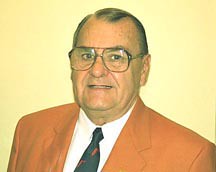 This is a reminder that our mail-bid sale of numismatic literature #102 will close on Tuesday, April 20, 2010 at 5:00 PM (EDT). You may view the sale on our web site at: http://www.lakebooks.com/current.html and your bids may be placed via email, telephone or fax until that time.
This is a reminder that our mail-bid sale of numismatic literature #102 will close on Tuesday, April 20, 2010 at 5:00 PM (EDT). You may view the sale on our web site at: http://www.lakebooks.com/current.html and your bids may be placed via email, telephone or fax until that time.
Good Luck with your bidding, Fred
Lake Books
6822 22nd Ave. N.
St. Petersburg, FL 33710
727-343-8055 Fax 727-345-3750
To visit the Lake Books web site, see: www.lakebooks.com
THE WILLIAM A. BURD NUMISMATIC LIBRARY
Len Augsburger writes:
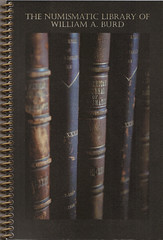 Bill Burd hosted a tour of his newly opened library on Saturday, April 17. Recently remodeled at the offices of the Chicago Coin Company, the library is literally a Chicago storefront full of numismatic literature. There is nothing quite like it in the whole country. For anyone passing through Chicago, I highly recommend a visit. Bill had a "giveaway" item - a spiral writing tablet featuring a few early volumes of the AJN on the cover. The inside cover provides additional information on the collection.
Bill Burd hosted a tour of his newly opened library on Saturday, April 17. Recently remodeled at the offices of the Chicago Coin Company, the library is literally a Chicago storefront full of numismatic literature. There is nothing quite like it in the whole country. For anyone passing through Chicago, I highly recommend a visit. Bill had a "giveaway" item - a spiral writing tablet featuring a few early volumes of the AJN on the cover. The inside cover provides additional information on the collection.
NEW BOOK: MEDALLIC PORTRAITS OF ADMIRAL VERNON
Kolbe & Fanning Numismatic Booksellers are pleased to announce the upcoming publication of a standard reference work on a long-neglected byway of American numismatics, namely Admiral Vernon medals:
by John W. Adams and Dr. Fernando Chao (h) with the collaboration of Anne E. Bentley
Kolbe & Fanning, Gahanna, Ohio, 2010. 240 pages, finely illustrated throughout in color. 9 by 12 inch format. Well bound in cloth with a pictorial dust wrapper. $95.00 plus $5.00 shipping in the United States and $25.00 elsewhere
Interest in this fascinating historical series has captured the attention of famous numismatists and collectors on three continents. Since the issuance of these medals in 1739-1741, no less than fourteen works on the topic have been published, the first in 1835 and the last in 1966. None of these earlier efforts succeeded in creating a practicable attribution system. Thus, despite their almost irresistible allure, Vernon medals have tended to overwhelm collectors with their apparent complexity at the same time that they were the bane of professional cataloguers. No longer will this be so. The authors have succeeded in gathering high quality images of all 275 varieties and modern technology makes possible the publication of these images in book form. The images combined with a new, user-friendly attribution system makes the identification of Vernon varieties both easy and accurate.
Earlier authors, a group which includes a marquess, an earl, a general and the president of a country, have not gotten the history right. English speaking writers tended to view Admiral Vernon as the conquering hero, while Spanish speaking writers regarded him as a low grade buccaneer. Adams and Chao have dug deeply into original source material in both languages which, in turn, has permitted them to publish some startling conclusions
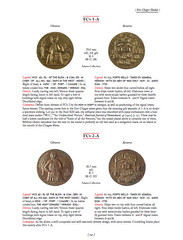 The authors' "History of the Events" sets the historical record straight and is accompanied by a bibliography, a guide to collecting the series, a chapter on the metals utilized, and a vital series of appendices comprising concordances, a census, biographical notes on prominent collectors, a guide to grading, and other germane topics.
The authors' "History of the Events" sets the historical record straight and is accompanied by a bibliography, a guide to collecting the series, a chapter on the metals utilized, and a vital series of appendices comprising concordances, a census, biographical notes on prominent collectors, a guide to grading, and other germane topics.
These sections are the soul of the book; its heart is the extensive, detailed catalogue of "The Medals Themselves," comprising two thirds of the volume. Here, over 275 medals are depicted in full color enlargements, accompanied by painstakingly detailed descriptions printed in two colors for ease of use. Dr. Joel J. Orosz has termed the book "one of the signal triumphs of modern numismatic scholarship" and concludes that "In fact, Medallic Portraits of Admiral Vernon does such a superb job of defining the previously indefinable, the only numismatic book to which it can be appropriately compared is Sylvester Sage Crosby's Early Coins of America."
Orders for the book are now being accepted and delivery of the book is expected in early June.
Inquiries or orders and payments may be sent to:
KOLBE & FANNING LLC
NUMISMATIC BOOKSELLERS
141 W JOHNSTOWN ROAD
GAHANNA OH 43230-2700
Tel: (614) 414-0855
Fax: (614) 414-0860
GFK@numislit.com
DF@numislit.com
To visit the firm's web site, see: www.numislit.com
UPDATE ON THE GUIDE BOOK TO THE GUIDE BOOK
Gary Dunaier writes:
The "Book Bazarre" ad for the new Red Book (The E-Sylum v13#15, April 11, 2010), specifically the note that "Appendix B (“Collectible Red and Blue Books”) has been expanded with more details, including more pricing for early Blue Books," prompted me to write and ask how Frank J. Colletti's A Guide Book of the Official Red Book of United States Coins has been doing. I enjoyed it very much and I'd buy an updated second edition if one were to come out.
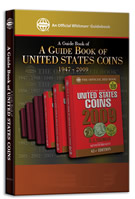 Frank Colletti's Guide Book of the Official Red Book of United States Coins --- whose in-house nickname is "The GBGB" (pronounced "jeebee-jeebee") --- has been popular with our readers. It gets a good amount of fan mail, queries, and offers of information for the next edition. This illustrates that there's something about the Red Book that really resonates with coin collectors. We see so much passion and nostalgia, and, interestingly, almost a sense of community ownership. People feel like "This is OUR book" (and even, in some cases, "This is MY book"!). It's a wonderful position for any publisher to be in, one we're grateful for, and one we don't take for granted.
Frank Colletti's Guide Book of the Official Red Book of United States Coins --- whose in-house nickname is "The GBGB" (pronounced "jeebee-jeebee") --- has been popular with our readers. It gets a good amount of fan mail, queries, and offers of information for the next edition. This illustrates that there's something about the Red Book that really resonates with coin collectors. We see so much passion and nostalgia, and, interestingly, almost a sense of community ownership. People feel like "This is OUR book" (and even, in some cases, "This is MY book"!). It's a wonderful position for any publisher to be in, one we're grateful for, and one we don't take for granted.
Frank is constantly gathering information for the 2nd edition, and monitoring auctions and private-treaty sales of rare editions, errors, limited editions, Red Book-related collectibles, etc. Ken Bressett continues to serve as a sounding board and historical authority. If E-Sylum readers have anything new to share, we'll credit them in the next edition. They can contact me at dennis.tucker@whitmanbooks.com, or email Frank directly at Treashunt@optonline.net.
P.S. The leather-bound Limited Edition is almost sold out. I believe we have fewer than two dozen left in stock.
ANS LIBRARY CATALOG NAMING CONTEST RESULTS TO BE UNVEILED
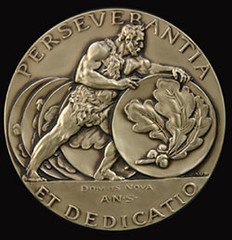 Monday, April 19, will be the day that we announce the winner of the ANS Library catalog naming contest and we will unveil the first public test version of what this new online catalog will look like. Readers should check out the ANS e-news announcement that will go out on Monday and will contain all the details. (To subscribe to e-news, readers can send an email to : enews@numismatics.org ). Past issues of e-news can also be viewed on the ANS website at : http://www.numismatics.org/NewsEvents/E-News
Monday, April 19, will be the day that we announce the winner of the ANS Library catalog naming contest and we will unveil the first public test version of what this new online catalog will look like. Readers should check out the ANS e-news announcement that will go out on Monday and will contain all the details. (To subscribe to e-news, readers can send an email to : enews@numismatics.org ). Past issues of e-news can also be viewed on the ANS website at : http://www.numismatics.org/NewsEvents/E-News
The official announcement details will appear on the contest website at : http://www.numismatics.org/Library/ANSLibraryNamingContest Please note that this is a test version and there will likely be lots of changes happening to the catalog in the future. We thank everyone in advance for their patience while we work out all the technical issues in order to have the most efficient and user-friendly catalog possible.
To read the earlier E-Sylum article, see: ANS LIBRARY CATALOG NAMING CONTEST (www.coinbooks.org/esylum_v12n50a08.html)
ANS OPENS NEW EXHIBIT ON COUNTERFEIT MONEY
Funny Money: The Fight of the United States Secret Service against Counterfeit Money Exhibition on the United States Secret Service and counterfeit money opens in New York City, Friday April 9, 2010. The exhibition :
- Features never-before-seen images of Secret Service operations.
- Includes evidence gathered from the global war on counterfeiting from the archives of the US Secret Service • Displays examples of recently seized counterfeit currency from home-grown and international counterfeiting rings.
- Highlights the little-known role of the US Secret Service in protecting the US currency and economy from attack
- Jointly organized by the American Numismatic Society and the Federal Reserve Bank of New York with the co-operation of the United States Secret Service.
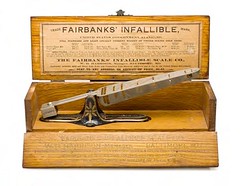 Funny Money— The Fight of the United States Secret Service against Counterfeit Money opens on Friday, April 9, 2010 at the Federal Reserve Bank of New York.
Counterfeiting money is one of the most common financial crimes in the history of mankind.
Funny Money— The Fight of the United States Secret Service against Counterfeit Money opens on Friday, April 9, 2010 at the Federal Reserve Bank of New York.
Counterfeiting money is one of the most common financial crimes in the history of mankind.
Often punished severely, it nevertheless continues to the present day. Organized by the American Numismatic Society, the Federal Reserve Bank and the United States Secret Service, the exhibition gives a unique insight in the workings of the Secret Service in their fight against counterfeiters. Better known today for its protection of the US President, the Secret Service was originally set up in 1865 to combat and prevent counterfeiting. The material in the exhibition, most of which has never been displayed before, illustrates the work of one of the more mysterious government agencies, which has rarely made its operations as public as in this exhibition.
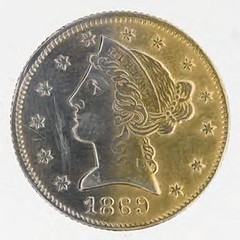
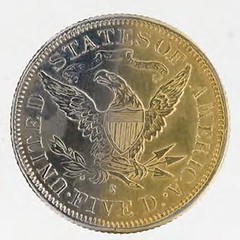
1869 Counterfeit $5
In the 1860s, over one third of all circulating currency was estimated to be counterfeit, which presented a serious threat to the economy. Within the first two decades, the Secret Service established routines for investigating counterfeiters and bringing them to justice. Newspaper reports from the period paint a vivid picture of a culture in which counterfeiters were both vilified for their crimes while being admired for their skills in producing and passing counterfeit money.
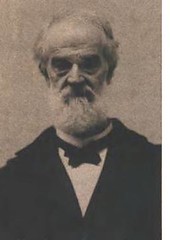 Famous counterfeiters, such as William Brockway and Victor Lustig, were very famous in their days, and the press reported their various activities in great detail.
Famous counterfeiters, such as William Brockway and Victor Lustig, were very famous in their days, and the press reported their various activities in great detail.
Whereas traditionally men are convicted of counterfeiting, the material shows the involvement in these operations of women, who were employed to pass fake money, supervise work or finance the purchase of equipment.
The exhibition introduces the various techniques employed by counterfeiters. Until the advent of the computer and ink-jet printers, counterfeit notes were made with engraved plates on offset printing machines. Nowadays, counterfeiters often use a home-office set up to produce small batches of counterfeit money. The exhibition features a note made by Albert Talton, who was arrested in California in 2007 in one of the largest and best organized counterfeit rings. He and his team produced millions of counterfeit dollars by using equipment and supplies from Staples.

Bleached $100 note with fake watermark
Thanks to the help of several retired US Secret Service agents, the exhibition is able to shed light on an investigation of the largest counterfeit ring in US history, during which 85 people were arrested in the late 1980s in Queens, New York; the gang produced $100 million of counterfeit money, which was connected to a Colombian drug operation. Surveillance photos, mugshots and other records show the painstaking work of the special agents over several years. Other parts of the exhibition illustrate the techniques of counterfeiters to produce counterfeit money as well as the new techniques of using scanners and inkjet printers. The Secret Service's operations in South America and abroad are also well illustrated, where counterfeit money often plays part in the trade of drugs and arms.
The curator of the exhibition, Dr. Ute Wartenberg Kagan, explained how the exhibition looks at the people involved and what motivates them in their work, both as criminals and special agents. “Many of the counterfeiters through the ages are motivated by greed, but in almost all the stories there is an element of pride in producing a good product. On the other hand, the investigative work of the Special Agents is so much less glamorous and gets little attention.
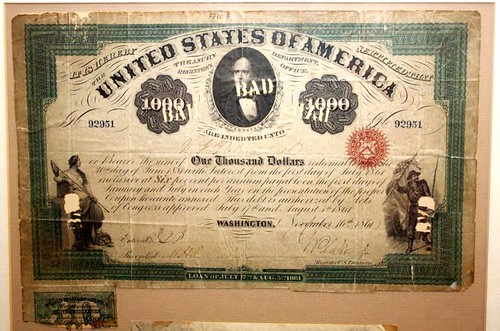
Through the exhibition you can see how some agents follow certain criminals for years, and a relationship develops. When putting together the exhibition from the photos, reports, newspaper clippings, surveillance and arrest photos, I got to know some of these criminals and Special Agents quite well, and I hope that Funny Money conveys some of this atmosphere to the visitors of the exhibition.”
The exhibition will run from 9 April until 31 December 2010. To arrange a preview or accompanied viewing of the exhibition, or an interview with the Exhibition's curator, please contact ANS administrator Joanne Isaac Isaac@numismatics.org or 212 571 4470 x112
KARL MOULTON ON JOHN ECKSTEIN, ENGRAVER
A few statements about Eckstein were made last week by R.W. Julian.
Mr. Julian wrote,
"Eckstein did not engrave any dies for United States coinage". He also wrote, "The "models" made by Eckstein in September of 1795 were actually plaster models for the use of Robert Scot, who did engrave the hubs and dies for this coinage...".
Did the Mint Director, in September of 1795, really pay $30 dollars for two small plaster casts? Thirty dollars was at least a month's wages for that timeframe. This would have been unthinkable, especially after the February 1795 Congressional investigation into the cost of operating the Mint. However, if this be fact, as stated, then let's see Mr. Julian's validation and supporting evidence for his statement.
Let's see what other researchers have written about Eckstein.
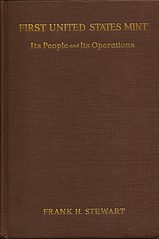 Frank Stewart, in his 1924 book titled, "First United States Mint - It's People and It's Operations", placed Eckstein in the Mint engravers section, p.87 and wrote, "September 9,1795, John Eckstein was paid Thirty Dollars for two models of dollars. He is mentioned as a sculptor of the Arms of New Jersey, in marble, in Peale's Museum advertisement December 27, 1796".
Frank Stewart, in his 1924 book titled, "First United States Mint - It's People and It's Operations", placed Eckstein in the Mint engravers section, p.87 and wrote, "September 9,1795, John Eckstein was paid Thirty Dollars for two models of dollars. He is mentioned as a sculptor of the Arms of New Jersey, in marble, in Peale's Museum advertisement December 27, 1796".
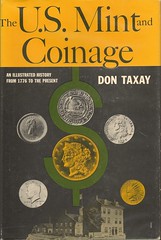 The models were quite probably unhardened dies, which could have easily made either plaster or wax casts. To quote Don Taxay from his 1966 "The U.S. Mint and Coinage" book, p.83, "This original die, when completed, contained only the device, or central part of the design, and was never used to strike coins. Its function was to raise a hub...".
The models were quite probably unhardened dies, which could have easily made either plaster or wax casts. To quote Don Taxay from his 1966 "The U.S. Mint and Coinage" book, p.83, "This original die, when completed, contained only the device, or central part of the design, and was never used to strike coins. Its function was to raise a hub...".
Previously, in November of 1794, John Smith Gardner was hired as an assistant engraver because Scot was not skilled enough to do the entire job that the position of engraver demanded. Gardner was never commissioned as such, but he was an "assistant" and did engrave dies.
Eckstein was a talented and skilled artist. Before he came to America, he had listed himself as a "historical painter and statuary to the King of Prussia". In Taxay, p.106, we see, "According to Sully, Eckstein was "a thorough-going drudge in the arts. He could do you a picture in still life - history - landscape - portrait - he could model - cut a head in marble - or anything you please".
Because he was most likely copying from Stuart's large painting of Anne Bingham, he was able to scale it down to fit a small model for the unfinished dies. Proof of his ability to do this can be found in George Escol Seller's 19th century writings, which were later combined and put out in a 1965 book published by the Smithsonian Institution, where he wrote of Eckstein, p.38,
"Mr. Evans (Oliver, who constructed and installed the first steam engine in the first United States Mint in 1816) made all his drawings full size on chalked boards; he had no confidence in working to scale with the character of labor to be had at that time...To combine and reduce these full size working drawings and put them into shape for exhibit, he depended upon Frederick and John Eckstein, then copperplate engravers in Philadelphia".
To quote Taxay further, p.106, "De Suassure apparently did not even trust Scot to prepare a die from Stuart's drawing...It was probably Eckstein, rather than Stuart, who redesigned the eagle".
In the 18th and 19th centuries, engravers did not have to work at, or be at, the Mint. This is evidenced by Scot having John Reich work on dies "for the national coin" several years before he was appointed as the assistant engraver in April of 1807. This is brought out in the 1884 three volume set titled, "The History of Philadelphia" by Scharfe and Westcott.
In 1818, when he was living in Philadelphia, Jacob Perkins created a few patterns for the proposed dollars, which were not accepted.
In 1824, Luigi Persico was paid $80, "for modeling a small medallion head for the silver coins" (Stewart, p.188).
Based on what others have reported, along with my own research into the activities of the early Mint, I submit that John Eckstein - a skilled engraver and artist (and not Robert Scot) was the engraver for the two dies of the Anne Bingham portrait that is seen on the Draped Bust silver dollars, beginning in 1795.
To read the complete articles, see:
MORE ON THE MODEL FOR DRAPED BUST COINAGE
(www.coinbooks.org/esylum_v13n14a12.html)
R.W. JULIAN ON THE MODEL FOR DRAPED BUST COINAGE
(www.coinbooks.org/esylum_v13n15a04.html)
MORE ON DR. JAMES MEASE (MEAN)
Kay Olson Freeman writes:The George Washington letter (with accompanying facsimile medal) about Anthony Wayne's Stoney Point medal, Sotheby's NY, April 14, 2010, Lot 179, SOLD, with buyers premium, for $98,500.
I see that Sotheby's misread the name "Dr. Mease" as "Dr. Mean" in its catalog entry. I am glad that The E-Sylum had such an educated discussion (January 17, 2010), where I learned about Dr. James Mease, of Philadelphia, early medal cataloger.
By coincidence, a friend recently brought me, from Rome, a catalog of an exhibit there on Charlotte Bonaparte (1802-1839) at the Museo Napoleonico. Charlotte, an artist, was a daughter of Joseph Bonaparte and I was interested in her visit (1821-1824) to his estate, Point Breeze, Bordentown, NJ. Charlotte writes in French and the catalog is in Italian; but I did figure out that Charlotte was very friendly with Dr. Mease's sister (who is described very amusingly) who was staying at a neighboring estate.
Charlotte comments mostly about how Dr. Mease's sons had to change their last name to Butler in order to obtain vast inheritance from their grandfather, Pierce Butler [at first John Mease would not do it]. I discovered details of this story easily online. It is odd that the Museo Napoleonico footnote identifying Dr. Mease reads " Il medico James Mease (?-?)". There is lot of biography information on the Internet now - and, of course, known to Esylum readers!
PS - Malcolm Bell, Jr., Major Butler's Legacy, Univ. of GA, 1987, says "Mease" is pronounced "Mays." Is this correct?
To read the earlier E-Sylum articles, see:
WASHINGTON'S LETTER REGARDING STONEY POINT GOLD MEDAL
(www.coinbooks.org/esylum_v13n15a15.html)
JAMES MEASE, GEORGE WASHINGTON AND ANTHONY WAYNE'S STONEY POINT MEDAL
(www.coinbooks.org/esylum_v13n03a06.html)
ON NUMISMATIC ENCYCLOPEDIAS
Dick Johnson suggested there should be a numismatic encyclopedia. There are already several to chose from, though not all are still in print.
1) W. C. Hazlitt -- Coinage of the European Continent (London 1893 & 1897; Chicago 1974), not a catalog but 750 pages of information on denominations, mints, rulers and a brief historical survey of coinage in all the kingdoms of Europe.
2) R. A. G. Carson -- Coins of the World (London about 1964), similar to Hazlitt but more up to date and covers the whole world; however it lacks the chapters on denominations, mints and rulers.
3) Albert R. Frey -- DIctionary of Numismatic Names (ANS 1917; NY 1947 and 1974), the most thorough of the numismatic encyclopedias.
4) C. C. Chamberlain -- Teach Yourself Guide to Numismatics (London 1960), delightful pocketbook size basic guide.
5) C. C. Chamberlain & Fred Reinfeld -- Coin Dictionary and Guide (NY 1960), similar to the previous but with an American perspective.
6) Richard G. Doty -- MacMillan Encyclopedic Dictionary of Numismatics (NY 1982), a good work though limited.
7) Ewald Jung -- World Coin Encyclopedia (NY 1984), rarely ever seen, I think this is the best of the modern numismatic encyclopedias.
8) Adrian Room -- Dictionary of Coin Names (London 1987), a scaled-down but more up to date version of Frey's work. Room's focus is on the origin of the coin denomination -- that is the origin of the word -- rather than the coins themselves.
9) Joe Cribb, Barrie Cook & Ian Carradice -- The Coin Atlas (London 1990; NJ 2004), a related work, arranged geographically rather than alphabetically. Not really an encyclopedia, but an historical survey of world coinage with lots of colorful maps.
10) R. Scott Carlton -- International Encyclopedic Dictionary of Numismatics (Krause Publications 1996), the latest and most disappointing of the numismatic encyclopedias. Each entry has been translated into several other languages, providing a lot of padding to this book.
In addition to these works in English, there are other such works in German and no doubt other languages. There are at least two encyclopedias of Chinese numismatics (in Chinese), one of them in two volumes.
NUMISMATIC VOCABULARY: DOUBLED DIE VS DOUBLE DIE
Ron Pope writes:
The correct term is "Doubled," not "Double."
James Higby writes:
Numismatists whom I respect say that
1) the proper term for the phenomenon under discussion is "doubled" die, not double die, and
2) at least in the 20th century, the overdated 1918/7-D nickel, the 1943/2-P nickel, both 1942/1 dimes, and the 1918/7-S quarter overdates can also be considered as "doubled" dies. These coins were twice hubbed, once with each date in question. Especially on the dimes, the date numerals show the telltale shift of a slight rotation from the first hubbing to the second, being just slightly out of register. Thus, these overdates can also be considered as "doubled" dies.
Eric von Klinger writes:
Dick Johnson should be aware that "doubled die," not "double die," is the settled usage among variety and error specialists and has been since the 1970s. As for PCGS usage, the glossary on the PCGS Web site says under the entry for "double(d) die": "PCGS uses doubled die as the designation."
Alan Herbert, who often labels terms that have simply fallen out of favor "obsolete," states that the form "double die" is instead flat-out "incorrect" because, taken literally, it would mean that a coin was struck by two dies. The point is that the coin shows doubling that is present on the die that struck it; hence, "doubled die." Today, a collector or dealer who uses the form "double die" is taken as inexpert.
To read the earlier E-Sylum article, see: NUMISMATIC VOCABULARY: DOUBLE DIE (www.coinbooks.org/esylum_v13n15a10.html)
MORE ON GHOSTLY COINS
John Salyer writes:
There is a British ghost-hunting show on the Syfy Channel called "Most Haunted", which I have been known to watch on occasion (entirely my wife's fault).
On at least two occasions, there have been coin-throwing incidents on that program, including one memorable occasion when the show's cast was conducting a séance in the middle of the night in some old British building, possibly a castle.
An "old gold coin" appeared out of nowhere and landed in the middle of the large table that the séance was being conducted around. They showed the coin several times, but never closely enough for me to identify the type or the date. Assuming that the incident wasn't faked, it was a pretty dramatic example of ghostly numismatics.
Philip Mernick writes:
This coin collecting ghost also seems to have been able to foretell the future if he/she could leave a 1936 penny with the head of King George VI. All issued 1936 pennies showed George V who died in January of that year. This clever ghost obviously also knew that Edward VIII was going to give up his throne for Mrs Simpson in December of the same year. George VI succeeded in 1936 but no coins were issued in his name until 1937.
Bruce W. Smith writes:
The story on the coin-throwing poltergeist reminded me that traditional Chinese coin catalogs include sections on "spiritual" coins. In fact, the oldest surviving numismatic work in the world, the Ch'uan Chih by Hung Tsun (published in China in 1149) has four such chapters. Of this book's 15 chapters, Chapter 8 is on coins which fell from or were used in heaven; Chapter 13 titled "Strange Coins" is on various types of amulets. Chapter 14 is on supernatural coins (more amulets) and Chapter 15 is on "Ya Sheng Coins." Ya Sheng is a special term meaning to supress demons; the coins listed in this chapter are supposed to be able to do this if properly used. No doubt there are coins or medals from other countries which claim supernatural powers.
To read the earlier E-Sylum article, see: THE COIN-THROWING POLTERGEIST (www.coinbooks.org/esylum_v13n15a22.html)
THE BOOK BAZARRE
THE MESERVE COLLECTION OF LINCOLN IMAGES
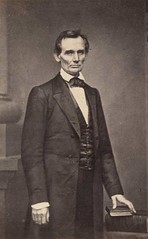 My partner in Signature Art Medals, Mark Schlepphorst, and I visited a museum this week to view the Meserve collection of Lincoln images. It was at the Bruce Museum in Greenwich, Connecticut, a charming little museum of exquisite taste sitting atop a gentle knoll. Don't expect this to be a country museum with great grandmother's quilts and pottery. This is a first class museum with a highly professional staff that mounts 14 major exhibitions a year!
My partner in Signature Art Medals, Mark Schlepphorst, and I visited a museum this week to view the Meserve collection of Lincoln images. It was at the Bruce Museum in Greenwich, Connecticut, a charming little museum of exquisite taste sitting atop a gentle knoll. Don't expect this to be a country museum with great grandmother's quilts and pottery. This is a first class museum with a highly professional staff that mounts 14 major exhibitions a year!
We met with the director, Peter C. Sutton, to show him three of our Lincoln numismatic items, including our latest -- modeled from one of the very Lincoln images on view in his own Arcade Gallery exhibit. "Very attractive," he said, as his hand lowered from the weight of the cast plaquette.
"It was modeled by Don Everhart of the U.S. Mint," I said, going into my pitch about how he had achieved exactly the image of that Brady photograph. Mark told how Lincoln had posed for the famed photographer before he gave a talk at the Cooper Union that same day. I had to apologize, I was more familiar with Ostendorf numbers of Lincoln photographs rather than Meserve numbers, since I had met and interviewed Lloyd Ostendorf and had cataloged a Lincoln medal he had designed that was struck by Medallic Art Company.
These two authorities had cataloged Lincoln images much like we catalog and number items in the numismatic field. There are Ostendorf numbers and Meserve numbers. For example, Victor D. Brenner used a carte-de-visite made from a Lincoln photo which I had always known as O-61. I had to learn this was Meserve 1864-2A. I wish someone would compile a concordance between the two numbering systems.
The Meserve collection was formed by a New York City merchant in the early 20th century. He acquired 15,000 Brady's glass negatives. In a lifetime of collecting he added to those as photographs of Lincoln by other photographers became available. The collection grew with about 100 studio photographs, a dozen outside photographs of Lincoln and hundreds of related photos of cabinet and family members, news events, Civil War photos and such.
The collection stayed in the Meserve family until today, it is the property of the Meserve-Kunhardt Foundation with third and fourth generation family members in control. The foundation furnished the Bruce Museum over 400 objects which curator Robin Garr, and guest curator Peter W. Kunhardt, Jr., had to winnow down for exhibition. Along with bronze statues by Augustus Saint-Gaudens and Charles Keck, the photo presentations are perfect. Negatives, for example, are placed in one case where you press and hold a button to back light the negatives. Images instantly come alive.
Another feature was life-size enlargements of every Lincoln facial portrait. These were mounted above the exhibit cases on the wall in chronological order. A viewer can sense the change in the man over the years -- from the first 1847 photo in Springfield, Illinois to one 1865 fuzzy photo of the dead president lying in state -- more so, than the obvious change of clean-shaven to bearded candidate and president. Events such as the death of his son, his struggles with Civil War generals, and mounting war casualties are reflected in the president's visage.
Mark and I obtained great pleasure from viewing the 2 x 3-inch original Brady print of that Cooper Union day photo of Lincoln, a print of which we furnished Don Everhart to model for our cast medal. Everhart nailed it! His model is exactly like that Brady print!
The Bruce Museum exhibition, Lincoln, Life-Size, is the first public showing of this famed Lincoln image archive. While the foundation may select other museums to exhibit the collection, anyone near Greenwich should take advantage and visit while the exhibit remains open, until June 6th. More details are available at the museum's web site: www.brucemuseum.org
Since The E-Sylum is about books, I can only state I could not leave the Bruce Museum without visiting the gift shop. True to form I bought the most expensive book, Lincoln Life-Size by three Kunhardt authors, and the cheapest "book" an album of Lincoln post cards reproduced from objects in the Library of Congress collections.
QUERY: RESEARCHING CONTEMPORARY NEWSPAPERS FOR NUMISMATIC INFORMATION
Pete Smith writes:
What is the level of interest in collecting articles from newspapers? I have recently been doing research in old newspapers. I believe there is an incredible wealth of material there. I am unsure how to gather this and share it with other researchers. Many of these articles are on subscription sites that cannot be reached through a simple link.
But Pete makes a good point. If it's behind a firewall, how can the fruits of your labor be shared? -Editor
AN OVERLOOKED RESOURCE: COIN CLUB MEETING REPORTS
Rollie Finner's passing was noted awhile back. When I was a young guy working at Krause Publications in the mid 1970's, I was often working in the office at night. In the evenings I would often see Rollie using the Krause library after everyone had gone home. I finally asked him one night what he was doing. He was working on a history of the Central States Numismatic Society, and was Xeroxing all the reports on the society published in The Numismatist and Numismatic Scrapbook.
In those days, the secretaries of coin clubs sent a report on each meeting to the Numismatist and the Scrapbook, and these were published in the magazines. By collecting these reports, Rollie could track the activities of CSNS. I think these club reports are an overlooked resource for those interested in numismatic research. Most clubs had a "show and tell" feature in which members would exhibit their rarest or newest or favorite numismatic items. By following the club reports it is possible to track when a specific collector was active, which club meetings he attended, what coins or notes he owned and when he owned them.
To read the earlier E-Sylum article, see: ROLLIE W. FINNER, 1934-2009 (www.coinbooks.org/esylum_v12n39a06.html)
TRUTH AND FICTION OF THE 1574 LEYDEN SIEGE COINS
Bouke Jan van der Veen of Leiden writes:
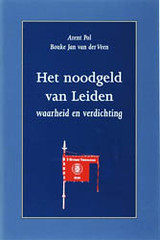 On your web site I found an item about the paper emergency-coinage of Leiden 1574; “QUERY: TERM FOR PAPER PRESSED INTO COIN FORM SOUGHT”. The Leiden paper coins are not to be considered as “papermoney”. The city only used paper from old books – not “covers and pages of church missals, hymnals” but paper from many sort of incunabulae dating long before 1574 most of them dealing with church related subjects and Churchfathers – as most of the books did in that time, ordered by the citycouncel from a local bookbinder's stock, because all other materials (metals) were used already in an earlier stage of the siege (copper and silver from the churches etc.). No missals, no hymnals.
On your web site I found an item about the paper emergency-coinage of Leiden 1574; “QUERY: TERM FOR PAPER PRESSED INTO COIN FORM SOUGHT”. The Leiden paper coins are not to be considered as “papermoney”. The city only used paper from old books – not “covers and pages of church missals, hymnals” but paper from many sort of incunabulae dating long before 1574 most of them dealing with church related subjects and Churchfathers – as most of the books did in that time, ordered by the citycouncel from a local bookbinder's stock, because all other materials (metals) were used already in an earlier stage of the siege (copper and silver from the churches etc.). No missals, no hymnals.

They are coins made from paper yes... but have nothing to do with banknotes etc. Shortly after the siege they were changed for silver. The coin-dies for the paper coins were made by a local silversmith and are still preserved in the museum “De Lakenhal” in Leiden and have an identical shape as normal dies for metal coins.
Recently drs. Arent Pol and I (drs. Bouke Jan van der Veen) gave a lecture about this subject published in the book Arent Pol, Bouke Jan van der Veen, Het noodgeld van Leiden waarheid en verdichting - 3 Oktoberlezing 2007 (Leiden 2007) [translation of the title “truth and fiction of the Leyden siegecoins 1574”]. Maybe this information can help you with your query.
To read the earlier E-Sylum articles, see:
THE EARLIEST PAPER MONEY ISSUED DURING A SIEGE
(www.coinbooks.org/esylum_v13n12a15.html)
QUERY: TERM FOR PAPER PRESSED INTO COIN FORM SOUGHT
(www.coinbooks.org/esylum_v13n08a14.html)
FRANK DUPEE: A STUDY IN NUMISMATIC RESEARCH
Chris Fuccione writes:
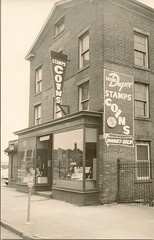 I did some quick research on Frank Dupee. First, according to Illustrated Boston, the metropolis of New England. 1889, there was a Frank Dupee at 185 Summer Street that was a wool trader.
I did some quick research on Frank Dupee. First, according to Illustrated Boston, the metropolis of New England. 1889, there was a Frank Dupee at 185 Summer Street that was a wool trader.
I also called Boston Public Library Kirstein Business Library and they did not have a listing for him as a coin and stamp dealer. One last thing he could have been is the third-worst pitcher in the history of major league baseball.... but because he needs good eyesight to be a coin dealer in the era before loupes this might be a dead lead...
John Lupia writes:
Regarding Frank Dupee, I have not yet found anything on him. Looking at the post card photograph a coin parking meter is seen at the curb in front of the store. The first parking meters were installed in the summer of 1935 in Oklahoma City. The parking meter in the photograph does not look new, but perhaps, about a decade or more old. I am not sure, but it does look like it might be either a MI-CO or Rockwell Meter single head model from the 1940's. Perhaps someone expert on this can identify it better. I am not sure when Boston installed the first parking meters but they did install 5,000 in May 1948. My guess is that the post card dates from the late 1940's to late 1950's.
Also in view in the photograph is a car parked on the corner, which seems to corroborate this dating. If the backside of the post card is shown it might offer additional clues about the dating, especially the name of the printer, or if a postage stamp is franked, or any postal cancellation markings. Consequently, I doubt that Frank Dupee, the stamp and coin dealer, is identical to the man with the same name, who, donated money in 1909, since he would be in his mid to late 70's or 80's at the time of the photograph.
It is hard to tell where the store is located from the photograph but the cityscape reflected on the glass storefront window shows one lonely skyscraper, most probably an office building, rather than tenement housing.
I am not sure about the cityscape of Boston's North End section during this time-frame if in fact it matches that of the window reflection in this photograph. Perhaps someone from the Boston Historical Society can help. Hopefully someone has better data to inform us whether or not David Ganz's kind suggestions are right regarding the identification of the man and location of his store.
Dan Demeo writes:
About Frank Dupee, never heard of him, but, he's not from that long ago, see the parking meter on the sidewalk in the picture. Checking the Social Security Death Index, a good place to start a search, I see several Frank Dupees, three of whom had their SS numbers issued in Connecticut. I don't know though, the image of the city, reflected in his front window, could well be Boston...
Jud Petrie writes:
As a youngster I used to frequent the Frank Dupee Stamp & Coin shop in New Haven, Connecticut with my grandfather, an avid stamp collector. From what I remember, his business was almost all stamps, with just one corner of the shop dedicated to coins, but then again, my memory isn't what it used to be either!
Anne Bentley writes:
I'm not having any luck with New Haven directories...do you think he might have advertised in The Numismatist?
John Lupia made some great insights by simply examining the photo itself. To answer his question, the back of the card is basically blank, with only a place for a stamp and address, and the words "PHOTO POST CARD". It was produced by Kodak. This could help narrow down the timeframe of the photo, which I agree appears to be from the late 1940s to late 1950s.
Jud Petrie's recollection is the only first-hand report we have, but it has yet to be verified with a city directory or phone book listing. While Jud recalls mostly stamps from his visits with his stamp-collecting grandfather, reviewing the photo again shows that the word "COINS" is given much more prominence than "STAMPS" on the shop's signage. Perhaps Dupee was more active in coins than Jud recalls.
In any event, all we've accomplished so far is to identify New Haven as a tentative location, and neither New Haven nor Boston have been proven or disproven. Somewhere out there though, is some proof, and perhaps it does lie in a contemporary numismatic publication as Anne suggested, such as a membership announcement in The Numismatist or an ad in Numismatic Scrapbook. Keep you eyes peeled, folks. The proof may well turn up someday. These articles on Dupee, like all E-Sylum content, will be made available of the Internet, and perhaps someday one of Dupee's descendants will find them and comment. Thanks again, everyone. -Editor
Real Photo Post Cards have become quite a big field in collecting. I have friends who go into that in detail. There are a number of Fricke Differences (subtle variations, named for a local collector) in the details that can date them. If you send an image of the back of the card I could probably have it dated as closely as is possible. It would take some checking, and I would learn more about this field in the process. EK Co. produced Photo Post Card stock for decades, and I still have some unexposed sheets in a box in our collection. I'd guess from 1910 through 2005 era without checking.
Here's the back of the card. Nick looked into it, and this is the most recent style: "1950 or thereafter." So this lines up with the visual cues indicating 1950s or 60s.
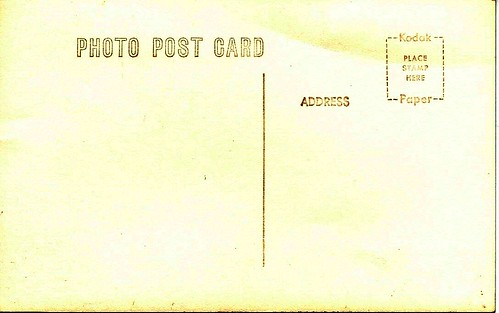
To read the earlier E-Sylum article, see: MORE ON COIN DEALER FRANK DUPEE (www.coinbooks.org/esylum_v13n15a05.html)
ANCIENT COIN COLLECTORS GUILD URGES ACTION
Bill Rosenblum writes:
This is a most important issue that may one day even include antiquarian books.
The U.S. State Department has announced a date of May 6-7 for Cultural Property Advisory Committee hearings on the request for renewal of the Memorandum of Understanding with Italy. Hopefully your eyes are not already glazed over by this first sentence. In practical terms, the U.S. government is about to decide whether antiquities and other forms of cultural property that Italy claims as its heritage ought to be restricted from entry into the U.S. unless accompanied by Italian export permits. There is already such an agreement in place, but ancient coins have been exempted twice before in these renewal requests that cover a 5-year window.

We have very good reason to believe that Italy and members of the archaeological community will this time seek to add coins to the list of restricted items. There is a period open for public comment on the issue and the best way to comment is by fax. Don't despair, this is VERY easily done. Simply go to the ACCG web site at http://accg.us and click on the Fax Wizard link (picture of U.S. Capitol Building) on the left side of the page. It says "Fax Your Legislator" but will indeed send your message to the State Department. You will be guided through a brief and easy to follow process that sends a free fax to the State Department registering your views.
Why oppose these import restrictions? Because Roman coins are at the very core of the cultural experience that we all treasure. They have circulated all over the known world in antiquity and since through trade and collector markets. It is impossible to distinguish a Roman coin found in Britain, for example, from exactly the same type, mint, etc found in Italy. Requiring an export permit from Italy on a coin found and legally exported from Britain would not only be impractical, it would not have any legal foundation.
Still, any court challenge by an individual is unlikely since the legal costs usually far exceed the value of seized objects. Import restrictions are simply not a viable solution to protecting archaeological sites. They are an idealist panacea that cause far more harm to society than any possible good. Excluding the U.S. collector and trade from the legitimate world market for Roman coins, or unilaterally forcing draconian documentation requirements on Americans, would be grossly prejudicial and would certainly be against the interests of American citizens and their traditional freedoms.
We simply MUST oppose any expansion of the MOU with Italy to include coins. We must do so with an absolutely resounding voice.
EVERY person reading this has an interest in ancient coins, even if you don't collect Roman coins, and needs to make their view known. The entire hobby is being challenged. There is simply nothing more important to do RIGHT NOW than to take five minutes, go to the ACCG fax wizard and register your concern. Don't wait 'til the 22 April deadline.
The ACCG will defend the hobby to the best of its ability, but in the final analysis it is the will of the people that will prevail. Those who speak most loudly and clearly will succeed. DO IT!
To send your comments to the State Department, see: www.vcoins.com/fax/
THE BOOK BAZARRE
QUERY: HAVEN O'MORE, WORLD'S GREATEST BOOK COLLECTOR
I read the comments in the last E-Sylum about Basbanes' A Gentle Madness, and the discussion on whether or not it was sufficiently numismatic to include in The E-Sylum. I think that such aspersions are not justified.
I recall writing that bibliomania was our middle name in a different context some time back -- about eight years ago, I had a submission published in The Asylum (seemingly passing editorial scrutiny). This opus was entitled "Bibliomania Through the Ages: Four Mini-Reviews" (The Asylum, Vol. 24, No. 2 (2002), pp. 59-61). For me, this was a marvel of succinctness, only requiring three pages to cover four books. There was no explicit numismatic content in my article, other than an incidental note that Stephen Blumberg (the world-record holder for book theft) did, in fact, have a numismatics shelf in his purloined collection.
I am not surprised that Dan found Basbanes to be a captivating speaker as well as writer. I recall that I was so intrigued by his discussion of the rise and fall of Haven O'More as the "world's greatest book collector" that I had made a note to myself to purchase any follow-up book that provided a resolution to the many questions brought up by this gentleman. I have recently been trying to find out myself, with some crude Google searches, but have not found anything really new that cannot be traced back to Basbanes himself.
Perhaps this erudite community could be posed some of these questions: What became of Haven O'More himself (and his three Ph.D.s and command of twenty languages)? Were all of the many millions of dollars he flaunted at auctions provided by his (very) silent partner? Has anyone here ever read his Sacrificial Bone Inscriptions? (Just for starters.)
Keep up the good work!
To read the earlier E-Sylum article, see: LECTURE BY AUTHOR OF "A GENTLE MADNESS" (www.coinbooks.org/esylum_v13n14a16.html)
QUERY: SOFTWARE FOR LARGE BIBLIOGRAPHIES
Bruce W. Smith writes:
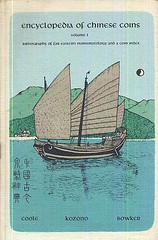 Compiling a bibliography is a thankless but necessary task. In the field of East Asian numismatics, Arthur B. Coole and Howard F. Bowker published bibliographies on the subject in the 1940's. In later years, they worked together with Kozono in Japan, and in 1967 together published an updated bibliography, as Volume 1 of Coole's Encyclopedia of Chinese Numismatics. This work recorded about 2,400 titles of books and articles in all languages on the numismatics of China, Japan, Vietnam, Korea, Tibet and Southeast Asia.
Compiling a bibliography is a thankless but necessary task. In the field of East Asian numismatics, Arthur B. Coole and Howard F. Bowker published bibliographies on the subject in the 1940's. In later years, they worked together with Kozono in Japan, and in 1967 together published an updated bibliography, as Volume 1 of Coole's Encyclopedia of Chinese Numismatics. This work recorded about 2,400 titles of books and articles in all languages on the numismatics of China, Japan, Vietnam, Korea, Tibet and Southeast Asia.
In the 1970's Pat Hogan in Iowa City, Iowa began keeping a file card record of newly published works as a supplement to Coole's bibliography. In 1975 Pat convinced me to take over the task. I made file cards for everything in the Coole-Bowker-Kozono bibliography and then began adding what has been published since. By the 1990's I had recorded 10,000 works, and decided to limit my efforts to just China. I have now recorded something over 8,000 books and articles on Chinese numismatics. Once I finish going through the numerous numismatic magazines published in China, there will certainly be 10,000 titles.
So far this bibliography is only arranged by author and as such is of limited usefulness. I had started to enter these works in a software program which would allow them to be sorted by subject, but that program and the computer are both obsolete now and can not be used. So I would like to ask the readers to recommend a software program which will allow me to sort these works by subject. It must be powerful enough to handle over 10,000 records, and ideally would accept Chinese characters. Also, if some serious person or persons would like to take over the recording of works on other areas of East Asia, I would be willing to make copies of my file cards on those areas.
THE BOOK BAZARRE
ALAN V. WEINBERG ON THE HOBBY IN THE 1960S
Having read Bob Rhue's reminiscences of his hobby experience in the 1960's, I thought I'd jump in with a few more general thoughts.
There were a lot fewer collectors and dealers in the early 60's. Most had no real affinity for natural toning and brilliant/bright was "in". "Original skin" by any terms was unimportant.
The 2nd largest & most important "coin show" (currency was not widely collected or emphasized back then) was the New York Metropolitan Coin Club show held once a year, in March, at the then New York Park-Sheraton Hotel, a five minute walk from Stack's who held their annual pre-eminent auction at that show.
The bourse size was a tiny fraction of today's large coin show bourses but the dealers set up and the material available, all "raw" of course, was usually top of the line. Bob Batchelder, Herb Tobias, Ed Shapiro, Max Kaplan, Dan Messer, the Stack "boys", a youthful Dave Bowers and Jim Ruddy, Ford & Wormser, Kreisberg & Cohen, Kosoff, Cathy Bullowa, FK Saab, "Foxy" Steinberg, "Izzy" Snyderman, Hans Schulman, Lester Merkin, Jerry Moskowitz, Dick Picker, Bill Anton Jr., and Ed Hipps.
Hipps offered me a four-piece Gem Proof Stella gold set for $40 grand and I passed and another time a Gem Unc 1792 half disme at around $10,000. A few others lined the walls around a relatively small "ballroom" in the hotel. To my memory, only four of these oldtimers are still very active on today's bourse- a then very young Donald Brigandi (monitored by his effervescent dad Tony) and today's very senior but very healthy Ben Levin, Ed Hipps and elder statesman QDB writing and administering the reconfigured Stack's.
I almost forgot to mention Morris Geiger (who called everyone 'kid' )- he was well liked and had a street-level coin shop on 44th St where incredible material would walk in. He was active into his mid 80's and, having retired to Florida, annually set up at the Jan FUN show until he died perhaps 6 yrs ago. Surprisingly, he looked virtually the same in his 80's as when he dealt actively in the early 60's.
Grading? While I have mixed feelings about slabs and the point by point grading system today, there were significant abuses back then, with EF and AU coins, often doctored or whizzed , being offered as Brilliant Uncirculated .
I learned early on in 1960 not to ever buy a coin in an auction that I didn't first examine when I "won" a Proof 1829 half dime for approx $50 from a very prominent NYC coin firm auction- the coin was a polished AU which I kept as a "lesson" I never forgot.
You could buy all the gem proof Barber halves and quarters you wanted for $50 or less on the bourse. Choice VF or EF (I mean choice!) 1793 chain cents - take your pick of 3 or 4 on the bourse floor. Nice Wreath cents? - too common and available to seriously consider spending real money on. Choice perfect EF-AU New Jersey coppers literally a "drug" on the bourse floor at $25 apiece at NJ and NY shows - and rarely attributed.
Crew-cutted Bob Batchelder of Ambler PA, who almost invariably had the best and highest quality material at each NY show, was the first bourse dealer any serious collector would approach. He wasn't cheap and his prices made you swallow hard, but he had the "stuff" and a pleasant personality to boot. He left numismatics abruptly decades ago - I never knew why - and made a name for himself in the rare autograph business still in Ambler , passing away around at 80 only perhaps two yrs ago.
Similarly, Long Island's Dick Picker always had a fascinating assemblage of rare colonial coins (he was the only regular dealer in such esoterica back then - Bill Anton only occasionally set up and was more of a collector) and Dick's prices were always sky high but you were paying for his expertise and his was the "only game in town". Dick always refused to "grade" his coins- he firmly insisted the grade was reflected in his price.
My biggest regret in all these years was when Dick called me up at home the summer of 1962 - I'd just graduated from high school. He had the Virgil Brand Brasher Doubloon and offered it to me for $15,000. I just didn't have the money and Dick sold it immediately to Jack Friedberg. Chicagoan Walt Persche has owned it now for decades, having bought it at a RARCOA auction for about $434,000 and last I heard he wanted $5 or 6 million for it.
Dick Picker reigned supreme for years until the theft of a briefcase out of an ANA show security room (contents never recovered and the unique die trial uniface WM 1792 Roman Head cent is still outstanding) and the resulting years-long battle with the ANA resulting in Dick's being barred from the ANA bourse sapped him of life.
I do recall being pulled aside at the circa 1960 NY Metro bourse and being warned by Martin Kortjohn, then the club official, that I could not offer a 1797 half cent to bourse dealers - only bourse dealers could sell coins. How things have changed!
And John Ford and Max Kaplan standing up mid-Stack's auction circa 1962 and yelling at each other to back off driving a price up - Ford enjoyed intimidating (or trying to) his auction competitors for decades thereafter.
And, perhaps at the same early 60's Stack's NYC auction, John Pittman striding up to the front of the auction audience all the way to the auction podium, turning around to stare at the audience and raising his arm to bid like the Statue of Liberty, daring his competitors to drive him up. Wouldn't work very well today!
And an utterly "Gem Proof" iridescently toned 1796 quarter that Stack's auctioned in the Milton Holmes sale in 1960 for an unheard-of $3,000 - I believe to "too-tall" collector (6'5" and under 200 lbs) Bill Wild who had a discerning eye but limited financial resources and used to repeatedly place his Gem 1792 half disme up for loan collateral to buy another rarity.
And an apparently teenaged Johnny Rowe boasting to me that he would/could buy the About Unc. Kellogg gold $50 fast approaching in the Stack's auction and me doubting him - he bought it - for around $15 grand!
Was the hobby more fun then? More enjoyable? More rewarding in every aspect? A resounding "Yes!" Knowledge was King back then - you didn't have the excellent reference books now available so Picker, Anton, Ford and others really prospered. They knew true rarity and they knew their clients. Collectors like me learned at their feet and from attending and watching/listening at the FAR fewer shows than are held today. Life just seemed less intense, more relaxed back then. And the hobby was too.
To read the earlier E-Sylum article, see: ROBERT RHUE'S RAMBLINGS ON THE HOBBY IN THE 1960S (www.coinbooks.org/esylum_v13n15a17.html)
QUERY: THE LIBRARY AND COLLECTION OF OLE P. EKLUND
Dave Hirt writes:
I would like to comment on an item in last week's E-Sylum. In The Emergency Money Collector Volume 2, Number 1 it states that Ole P. Eklund had a library of 30,000 books. That figure is hard for me to believe. 30,000 is a LOT of books! I have 5000 books and catalogs, and I have 24 bookcases FULL. If I had six times that, I can't even start to imagine where I would put them.
Eklund was an interesting person. He dedicated his life to numismatics. I read that early on he decided that he could not afford both a wife and numismatics, so he never married. He was a blue collar worker who never made big money. Probably because of this, he focused on the minor coinage of the world. I pulled my copy of the sale catalog of his coins. I believe that only a small portion of his coins were in this 4/20/51 sale. Over one half the lots are of Great Britain and her colonies. The catalog refers to future sales, but they never happened.
The Eklund sale was mail bid. The front cover says, Cataloged and sold by Gene DeNise. The terms and conditions, of which there is a full page, do NOT list where to send your bids. On the title page, it says, Cataloged and sold for the purchaser of the estate by Mrs. D. Dee DeNise 5550 28th Ave N.E. , Seattle 5, Wash. I have read that SHE was the purchaser, but after reading that statement, who knows?
To read the earlier E-Sylum article, see: THE EMERGENCY MONEY COLLECTOR, VOL. 2 NO. 1 (www.coinbooks.org/esylum_v13n15a09.html)
HOARD OF HENRY I COINS UNEARTHED
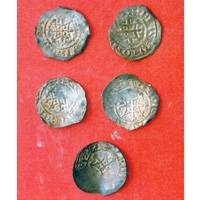 A TEAM of amateur Yorkshire treasure hunters has struck lucky after uncovering a massive hoard of 12th century coins – the first find of its kind in the country.
A TEAM of amateur Yorkshire treasure hunters has struck lucky after uncovering a massive hoard of 12th century coins – the first find of its kind in the country.
The 15 members of the West Riding Detector Group found the 178 silver Henry I coins scattered across a remote patch of farmland near Knaresborough.
It is the largest hoard of the coins, which date from between 1100 and 1135, ever found in the north of England and the only hoard that contains just that type of penny.
Yesterday North Yorkshire County Coroner Robert Turnbull declared the coins official treasure and the group looks set to sell them to the British Museum or Fitzwilliam in Cambridge.
Spokesman Peter Spencer said they had almost cancelled the trip the day they found the treasure and he only agreed to go after he was persuaded by another member.
He said: "It was incredibly exciting and to find something like this is just a detector's dream.
The proceeds will be split between the group and the landowner whose field the hoard was discovered on.
The curator of early medieval coinage at the British Museum, Gareth William, said in a statement read out to the court, yesterday: "Coins of Henry I's reign are rare at the best of times and the fact that all these coins are of a type is even rarer.
"They are probably part of a hoard from towards the end of the reign of Henry I."
To read the complete article, see: Treasure hunters strike gold with huge coins hoard (www.yorkshirepost.co.uk/news/Treasure-hunters-strike-gold-with.6228858.jp)
ON THE CHOICE OF ANA CONVENTION CITIES
Joe Boling writes:
I have been promoting the old style of ANA convention site selection - soliciting a host club, and moving the show around the country so that once every few years every member is within driving distance of the convention. But I must say that concerns about the vibrancy of the city that the show is held in have left me cold. I have never had time to even go to the Friendship Luncheon - maybe because my convention duties have been heavy, or maybe because I don't do that kind of exploring even when I am at home or in a "foreign" city not involved with numismatics. Comparing Rosemont unfavorably to downtown Chicago just does not reach me. When I am at an ANA convention, I leave the building only if it's necessary to do so to reach the hotel I am using. The rest of the time I am working.
Bob Leonard writes:
I share David Lange's concerns about the diminishment of the ANA's educational role as a result of the Board's decision to hold the World's Fair of Money(R) in Chicago 2013-2015. Unfortunately, it is now the convention which supports the ANA, not the other way around.
But -- as General Chairman of the 2011 Chicago convention -- I want to assure David that the convention committee is well aware of his concerns regarding after-hours thrills. (Though I'm not sure that David, upon reflection, would want TOO much "adventure" in the city.) Chicago is next door to Rosemont, and the doorman at your hotel will be glad to summon a cab to wherever you like. Beyond that, we hope to find sponsors for some kind of shared transportation for dealers to Rush Street or other Chicago hot spots, and welcome volunteers. The bourse will be closing earlier now, so you should be able to tidy up and arrive in Chicago in plenty of time for cocktails and dinner. Chicago has many fine theatres, and if there is interest, we will see whether an excursion to them can be planned also.
I can't speak for the 2013 convention, but the 2011 committee hopes to set a precedent to follow for it and the later Chicago shows.
Ginger Rapsus writes:
I am delighted with the decision to hold the World's Fair of Money in Rosemont. I could go and not have to deal with air travel! I am glad that you brought out the very good point that Rosemont is not Chicago. I live in Chicago, and Rosemont is a good trip from where I am; Rosemont is quite a way north of downtown Chicago.
I think I mentioned at the time that I was disappointed with the hotel choices in Baltimore in 2008 and Denver in 2006. The closest hotels were not the HQ hotels. In Baltimore, I had to cab it back and forth. In Denver, it was a three-block walk, and not a pretty walk.
As for the choice of cities, I don't think too many people were thrilled with the show in Los Angeles last year. I recall shows in DC, Detroit, and New Orleans, but I don't think the show will be going to any of those cities anytime soon.
Bruce Smith writes:
For the past 20 years or more, most of the coin and paper money shows held in Chicago were actually located far outside the city, near the airport, either in Rosemont (in the convention center or the hotel across the street) or in a hotel just on the other side of the highway, but in a different suburb.
These locations are convenient for those driving to the show (to avoid terrible traffic in the city and limited parking) and for those flying to the shows (only a few minutes by taxi from the airport). However, it is true that the Rosemont area is "sterile" -- being primarily a business park -- and it lacks nearby entertainment or even good eating places.
Over the past 40 years, most larger coin and paper money shows have been moved to locations near airports. I have always heard that this was done to appease the dealers, many of whom flew to shows, and didn't like a location far from the airport. One of the side effects of this move, however, is that it then becomes very difficult for young collectors (who can not yet drive) to get to the show. Generally airports are located well outside of cities or in industrial or commercial areas -- far from residential areas. For those who drive this might be a good thing, but it deters young collectors from coming to shows.
Moving shows to areas near airports is not always done for the sake of dealers. I was involved in moving the Missouri Numismatic Society show from downtown St. Louis to a hotel across the highway from the airport. In this case the move was made for two reasons: few of the club's members (and few collectors in general) lived in the city; most lived out in the county; and no one who lived in the area wanted to be downtown, especially after dark. There was also the minor problem of homeless or intoxicated people wandering into the show and creating a disturbance.
As far as I know, everyone -- dealers and club members -- were happy to see the show moved to the airport area. But it did deter those who couldn't drive. Bus service in the county was very poor, but it was easy to take a bus to downtown St. Louis. Some of the St. Louis shows are now being held in St. Charles -- which is even more difficult to get to. It is far from the airport and I don't believe there are any buses going there from St. Louis city or county. The location is, however, convenient for local people who will be driving to the show, as the center of middle class population in the area has moved from St. Louis county to St. Charles county.
John and Nancy Wilson write:
We have been attending ANA conventions since 1979 and have only missed a few of them. We understand what is being said by David Lange regarding Rosemont and can agree to disagree regarding some of his thoughts on that city. We can agree on his other comments in regards to the ANA history of conventions. To begin with more ANA conventions have been in Chicago and or Rosemont then any other city. We can agree that Rosemont isn't downtown Chicago, but if anyone wants to go there the commuter train runs from O'Hare and from the Hyatt with great regularity to downtown Chicago. A cab ride downtown during non peak traffic we think is under $35.
We agree that Rosemont doesn't have much to do for the family that comes along to the show. As stated above, they can always find a way to go downtown. You should also remember that the ANA does have activities that take visitors away from the convention center. We don't think that these activities are fully explored by show attendants. The cost for them is minimal, and ANA probably doesn't make any money on them.
As for Rosemont as a convention city. It is the only city that ANA can host a convention that has a major airport (O'Hare) right next to it. You can get off the plane from almost any city in the world and probably go back home that evening. Thus, this city, located close to the center of our country, is very accessible and easy to get to. All major airlines operate out of O'Hare. What we like about it is that when we fly in from Florida, we can take the FREE shuttle to the hotel. Another plus is that the hotel's are close to the convention center. Hyatt, Sofitel, Doubletree, Embassy Suites, Crowne Plaza and a new Intercontinental Hotel are right there. Other chains are within a quarter mile away. Several great restaurants are also in close proximity including Gibson's steak house right across the street, along with a new Capital Grille and McCormick & Schmicks one block away.
We have always loved coin conventions that didn't have a shuttle from the convention center to the hotel(s) like Los Angeles last year. By making Rosemont one of the major cities, ANA wants to host an ongoing show the Association will probably be able to get much more attractive hotel and convention center prices. Time will tell regarding this. We have no problem with ANA making Rosemont an anchor city for their conventions for the reasons stated. Yes, it is a dull city, but other then that it has everything going for it at least for the collectors, public and dealers who come for the show. Illinois is also a tax friendly state, which you can't say for several of the cities ANA has hosted a convention in.
As for downtown Chicago that would be great - but - the convention center to the best of our knowledge has only one hotel by it. Shuttles would have to be utilized. Downtown Chicago is also very expensive with hotels or other conventions would be held there. We also wouldn't want to be flying into Chicago during rush hour traffic going downtown.
An ANA press release dated April 13th announced that the ANA would have an extra show on October 13-15, 2011 in Pittsburgh, PA. That means that the ANA will be in Sacramento, CA in the Spring, Chicago in the Summer and then Pittsburgh in the Fall. According to the numismatic press the Pittsburgh event is intended to launch a three-city rotation of autumn shows. Denver and Boston are the other two cities selected for the trio.
It was also reported that Boston has provisional status that would be reviewed after the results of this coming show are determined. We certainly hope that the mix of shows the ANA is planning works out well for the membership? All the sites being planned for have downtown convention centers which will make the members who like these types of venues happy.
The following is a little history regarding ANA conventions. Before the ANA opened its headquarters in Colorado Springs in the 1960's, the Association expenses were probably very minimal. The ANA was considered a very important convention for most U. S. cities. All cities would have loved to host an ANA convention. The Central States Numismatic Society has also hosted many coin shows since the late 1939's or the early 40's which were successful.
Other organizations also have hosted conventions, but none could compare to the ANA annual convention. People came from far and wide to attend "the ANA show." It went to many cities big and small and the conventions were usually well attended and the dealers probably did well. Those were the uncomplicated years for running not only ANA conventions but local and state shows. Today, several major coin shows are held every month with conflicts always happening. This year the paper money show in Memphis this June conflicts with the Whitman Baltimore show. Baltimore always has lots of paper money dealers attending.
We can recall Ruthann Brettell, from ANA, coming to Milwaukee, WI on an invitation from the Visitors Bureau for a potential convention in 1986. At that time, the ANA conventions were considered one of the top ten conventions for any city in the U. S. That top ten convention statement was from the visitors bureau in Milwaukee. Milwaukee was selected for that show, and we were the Assistant General Chairmen under Kurt Krueger. From that time to this time we just don't think that the ANA has very much clout (getting really cheap hotel rooms and convention center rates) when going to larger cities around the country. Thus, we think one of the reasons for Rosemont is that they probably will be able to get better rates by making it an anchor city for their conventions.
What does it mean to the clubs and their history, with the move to anchor the show in Rosemont for 2011 and then in 2013 and beyond? We just don't think that it will impact the ANA history or clubs very much. It will just make it more difficult for other cities to catch up with Chicago in hosting ANA events. The Chicago Coin Club is still tops for hosting ANA coin conventions. Furthermore, as you can see from our above comments that ANA will still be going to cities besides Chicago but probably not in the summer.
The ANA is working very hard to try to take care of all its dealer or collector members. Let us give them a chance and only time will tell if Rosemont is successful as an anchor city. In reality, ANA just doesn't have a lot of cities it can select. We don't have any problems with what they are trying to do to make ANA the place to go to for conventions. As for the Canadian 1909 convention, someone else can answer that question.
Yours in Numismatics, John and Nancy Wilson, ANA Volunteers and Past Board Members
To read the earlier E-Sylum article, see: THOUGHTS ON THE ANA CONVENTION CITY PLAN (www.coinbooks.org/esylum_v13n15a18.html)
HINT FOR READING THE E-SYLUM ON MAC COMPUTERS
I checked my Entourage (email reader) and iMac system preferences. Though Entourage calls out default Fonts, these seemed compatible with UTF-8. So that did not seem to be the source of the problem.
I then check my iMacs'/Entourage/Preferences/Mail & News Preferences/Read/Language/Default character set for unlabeled messages .... Which was set to: Western European (ISO),
I changed it to UTF-8. That appears to have fixed the problems that I did check.
So it appears it was a general iMac system setting for ‘unlabeled messages' that was causing a problem mapping. So I would suggest, from your end, to add a general UTF-8 callout to avoid the problem at the receiving end.
MEDALLION DEPICTS VINCE LOMBARDI AS LAUREL-CROWNED HERO
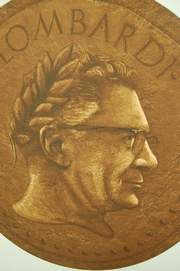 The legend of perhaps the most famous person in Green Bay history will grow with the creation of the Palma Vincentiana, measuring 3 inches across.
The legend of perhaps the most famous person in Green Bay history will grow with the creation of the Palma Vincentiana, measuring 3 inches across.
The medallion — the Vincent Award — bears the likeness of Vince Lombardi as if he were a victorious, laurel-crowned hero in Roman times.
“I think it looks awesome,” said Kevin Quinn, director of the national “Sport and Society in America” conference that St. Norbert College and the Green Bay Packers will host May 26-28.
At least four medallions will be given to winners in photo and film judging at the conference. Ten medallions are being made at a cost of about $10,000, Quinn said.
The makers expect the medallions to be prized.
“When I show people this, they say, ‘Wow, that's cool, I want one,'” said Nick Patton, the St. Norbert graphic artist who designed the medallion. “I guess that's the first reaction you want to get from making an award.”
Patton's response to those who want a medallion: “Well, you can't have one. You've got to earn it.”
The Lombardi family approved of the image for use solely on an award. The medallions are not for sale.
At the first meeting about creating a medallion, the thinking was, “We want something that's going to be emblematic of the relationship between the Packers and St. Norbert, and it was pretty quick that Lombardi was going to be the choice,” Quinn said.
The medallion's Roman coin concept stems from Bill Bohne, longtime St. Norbert art professor.
“We felt all along this is not going to be irreverent, but at the same time we didn't want it to become too super pompous,” Bohne said.
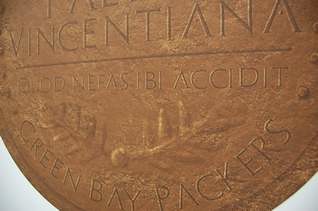
That certainly is the case on the reverse side of the medallion. On it is a line in Latin: “Quod nefas ibi accidit.”
 It's the translation of a Lombardi sideline rant at his team: “What the hell's going on out here?”
It's the translation of a Lombardi sideline rant at his team: “What the hell's going on out here?”
That was part of Lombardi's persona in his push for excellence, Quinn said.
“I think that gives it the right tone,” Patton said. “When you look at this thing, it's very Roman, very serious looking. And then to have that little tag line in there just gives it the right tone, I feel.”
To read the complete article, see:
Medallion depicts Vince Lombardi as laurel-crowned hero
(www.greenbaypressgazette.com/article/20100413/PKR03/
100413135/1058/PKR01/The-Palma-Vincentiana-
Medallion-depicts-Lombardi-as-laurel-crowned-hero)
TAKE THE BBC NEWS NUMISMATIC QUIZ
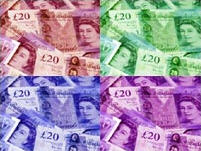 The use of cash is in steady decline in the UK and will make up less than half of all transactions within five years, research from the Payments Council suggests. So test yourself on the history of coins and notes.
The use of cash is in steady decline in the UK and will make up less than half of all transactions within five years, research from the Payments Council suggests. So test yourself on the history of coins and notes.
To take the quiz, see: 7 questions on coins, notes and cash in general (news.bbc.co.uk/2/hi/uk_news/magazine/8620274.stm)
GEORGE WASHINGTON RACKS UP LIBRARY LATE FEES
If George Washington were alive today, he might face a hefty overdue library fine.
New York City's oldest library says one of its ledgers shows that the president has racked up 220 years' worth of late fees on two books he borrowed, but never returned.
One of the books was the "Law of Nations," which deals with international relations. The other was a volume of debates from Britain's House of Commons.
Both books were due on Nov. 2, 1789.
New York Society Library head librarian Mark Bartlett says the institution isn't seeking payment of the fines, but would love to get the books back.
To read the complete article, see: George Washington racks up late fees at NY library (www.wtop.com/?nid=456&sid=1936575)
FEATURED WEB PAGE: GHANA BANKNOTES
This week's Featured Web Page is the Ghana banknotes page from the ATSnotes.com site.
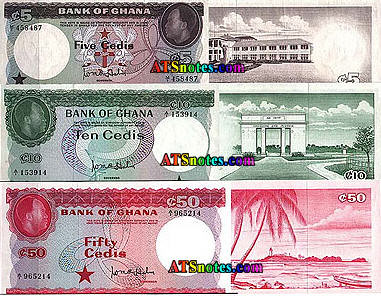
www.atsnotes.com/catalog/banknotes/ghana.html
